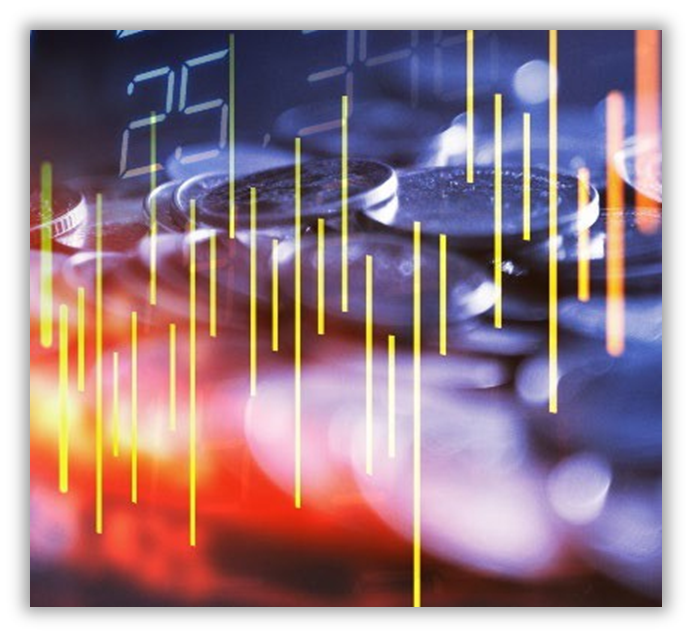Newsletter Page Option 2
THE LEADOFF SPOT
Stablecoins: Real-World Utility in the Crypto Universe
Stablecoins: Real-World Utility in the Crypto Universe

 As crypto headlines flash hot and cold, one part of the digital asset ecosystem has quietly gained meaningful traction: stablecoins—digital tokens pegged to traditional currencies like the U.S. dollar or baskets of currencies. Unlike Bitcoin and other volatile cryptocurrencies, stablecoins are designed as tools for efficiency and security, not speculation.
As crypto headlines flash hot and cold, one part of the digital asset ecosystem has quietly gained meaningful traction: stablecoins—digital tokens pegged to traditional currencies like the U.S. dollar or baskets of currencies. Unlike Bitcoin and other volatile cryptocurrencies, stablecoins are designed as tools for efficiency and security, not speculation.
We’ve long been skeptical of Bitcoin’s long-term viability as a store of value or medium of exchange. But stablecoins have always offered something different— practical benefits like avoiding currency devaluation, reducing cross-border costs, and, when used carefully, preserving financial autonomy. We saw early on how they could reshape the financial system, especially in countries facing monetary instability.
Fast, Cheap and (Potentially) Private Transactions
Stablecoins offer a seamless way to move money across borders. Traditional international wire transfers can take up to five business days with fees as high as 6.5%, depending on the countries. But stablecoin transfers can happen almost instantly for just pennies—especially when sent directly between wallets.
 There’s also a crucial privacy angle. For individuals worried about government overreach—not corporations, but governments themselves—stablecoins held in self-custody wallets (off centralized exchanges like Coinbase or Robinhood) can provide an extra layer of protection. This isn’t about evading taxes; it’s about maintaining control over personal finances during uncertain times.
There’s also a crucial privacy angle. For individuals worried about government overreach—not corporations, but governments themselves—stablecoins held in self-custody wallets (off centralized exchanges like Coinbase or Robinhood) can provide an extra layer of protection. This isn’t about evading taxes; it’s about maintaining control over personal finances during uncertain times.
The Genius Act Ushers in a New Era
In June 2025, the U.S. Senate passed the GENIUS Act (Guiding and Establishing National Innovation for U.S. Stablecoins Act), the country’s first major regulatory framework for stablecoins. It mandates 100% reserve backing, third-party audits, and licensing pathways for banks and fintech firms. (Source: Congress.gov S.394)
According to the Senate Banking Committee, the goal is to “enhance dollar competitiveness while protecting consumers in the digital economy.” Translation: stablecoins are here to stay — but now, under tighter regulation, and not all stablecoins will meet the new standards.
A Growing Appetite for U.S. Treasuries
As stablecoins like USDT and USDC become more popular, especially in nations grappling with high inflation and capital controls, they are reshaping global demand for U.S. government debt. These digital dollars are typically backed 1:1 by highly liquid, low-risk assets — with U.S. Treasury bills as the primary reserve asset. (Source: Reuters)
As of mid-2025, Tether and Circle hold about $120–200 billion in Treasuries, or roughly 2% of the entire T-bill market. Nearly 80% of stablecoin reserves are now parked in short-term government debt. Analysts project that a stablecoin market reaching $1–2 trillion could drive $1–1.6 trillion in additional T-bill demand in coming years. (Source: Yahoo! Finance)
In effect, millions of global users seeking a safe, dollar-based store of value are indirectly reinforcing U.S. debt markets — strengthening the dollar’s global role through decentralized, market-driven adoption. Use Case in Focus: Venezuela Take Venezuela, where hyperinflation has ravaged household savings in recent years: • 65,000% inflation in 2018 • 9,500% in 2019 • 2,960% in 2020 (Source: Statista) For someone like Alejandro, a Caracas business owner, these weren’t just statistics— they meant watching his savings lose value overnight. One month he could afford a car; the next, he could barely buy groceries. Fear of asset seizures and tighter capital controls only deepened the urgency to protect his wealth. Holding value in a dollar backed stablecoin could have preserved nearly 100% of purchasing power during these years of hyperinflation. And this isn’t hypothetical. Today, millions of Venezuelans and Argentinians use USD-backed stablecoins like USDT and USDC in everyday transactions to help shield themselves from currency collapse and maintain control of their finances. (Source: Bitso.com) Tools for the Real World, Not Just Hype We believe Stablecoins aren’t speculative gambles—they’re functional, flexible tools now operating in a clearer, more secure legal environment. While they won’t shield you from inflation entirely, they can tie your wealth to more stable monetary systems than fragile local currencies. As global demand grows, we may see stablecoins pegged to other national currencies or diversified baskets, offering broader protection from relying on a single economy. At DLAK, our commitment remains the same: • Stay ahead of the curve • Focus on long-term strategy over short-term hype That said, the market is still in its early stages, but understanding Stablecoins now puts you ahead of the curve as global money continues to evolve. A Final Word of Caution: Crypto assets carry theft risk. In 2024, $2.2 billion was stolen; in 2025, $2.1 billion has already been lost, with projections topping $4 billion by year’s end. We hope you found this information educational; and we are sure many people still today will choose to steer clear from this segment of the marketplace entirely.
*Digital currencies are speculative, highly volatile, and not backed by any central bank or government. Cryptocurrencies are likely to evolve over
time, including potential regulation. There are unique risks associated with cryptocurrencies relating to the technology that is central to its
existence.*